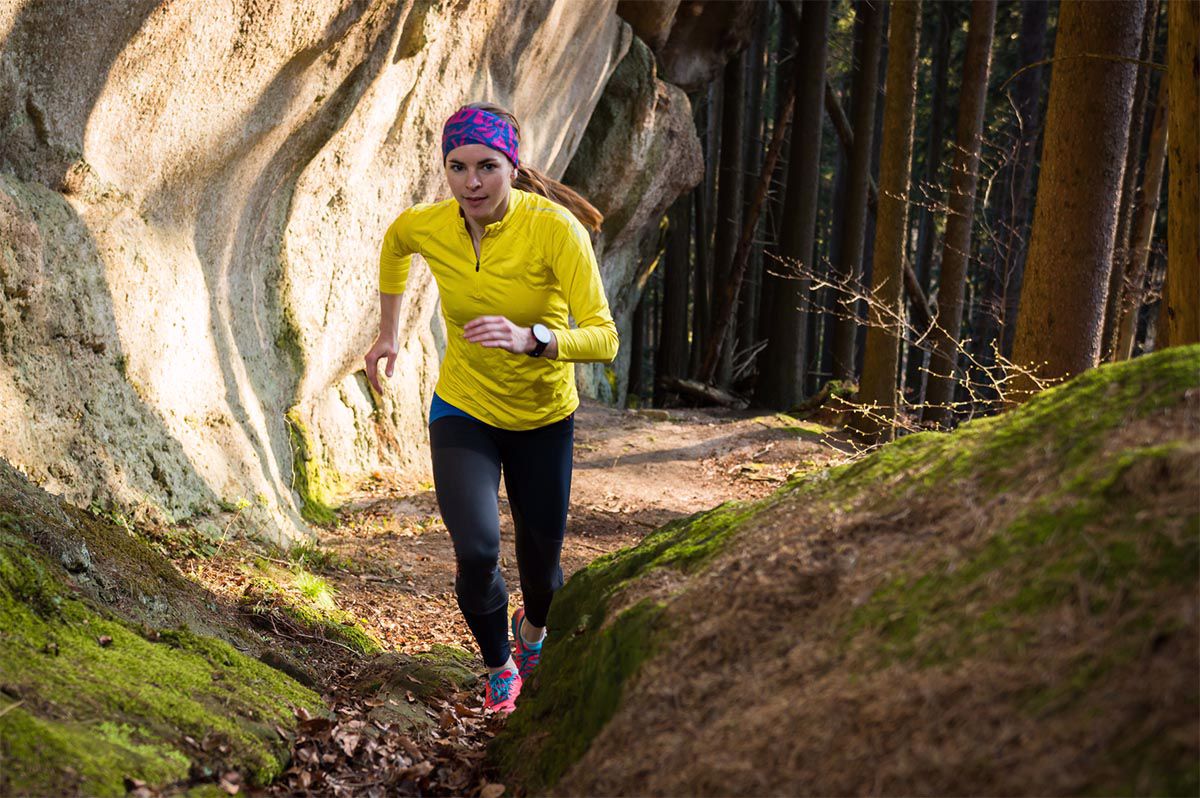Whether you've been hiking for half a century or are looking to hit the trail for the first time, one of the greatest joys of hiking is that there are so many different things to discover on your own two feet.
We're creating a Hiker's Glossary of useful trail terms paired with photos from our own trips to help introduce hikers of all levels to appropriate terminology and lingo.
When you read a description of a hike in a guidebook or on the AGC website, you may encounter terms you’re unfamiliar with, especially if you’re new to hiking or have only hiked close to home.
This first installment of the Hiker's Glossary is an illustrated guide to some different types of trail surfaces. Part two is all about terrain.
Rocky trail (small, medium, and large rocks)
When a trail is called rocky it can mean that there are rocks on the trail of different sizes, like the picture below. But it can also refer to trails where the size of the rocks is more uniform. The three main types of this kind of trail are scree, talus, and boulders.

Scree (scree field, scree slope): Small rocks

Small (pebble or gravel-sized), loose rocks on the side or at the base of a mountain. Because it's loose, scree is challenging to walk on. Sometimes you can see the route that other hikers have taken across a scree field. It's easier to descend a scree slope than to ascend—when descending you can dig your heels in as you go down.
Talus (talus field, talus slope): Medium-sized rocks

A collection of rocks (larger than scree) on the side or at the base of a mountain. Talus may be loose or stable depending on the size of the rocks, steepness of the slope, and other factors. The route across a talus field might be marked with cairns (piles of stones) or with painted blazes (trail markings), or you may need to find your own route across.
Boulder (boulder field): Large rocks

A boulder field is made up of large, irregularly sized rocks. You often need to use one or both hands for stability and balance when moving through a boulder field. Very slow going indeed!
Hard-packed dirt trail
A clear path where the dirt has been packed by countless hikers, making the trail apparent.

“Trail” across bare rock
A trail across bare rock is often times undefined and requires the user to follow another hiker or look for a safe path on their own.

"Trail" across snowfield
When hiking or snowshoeing across a snowfield, a path is often made by previous hikers and still visible in the snow. For those lucky enough to be the first feet on a snowfield, there may be no clear trail markings.

Sandy Trail
A trail through a sand-based ground location.

Slickrock
Slickrock is smooth, weathered sandstone found in the desert Southwest. When dry, the rock surface offers good grip for hiking footwear and mountain bike tires. Hiking trails in Utah often include sections of slickrock where paths are marked by cairns or painted blazes.

Trails that have been augmented (with steps, stones, pavement, etc.) to protect against erosion.





